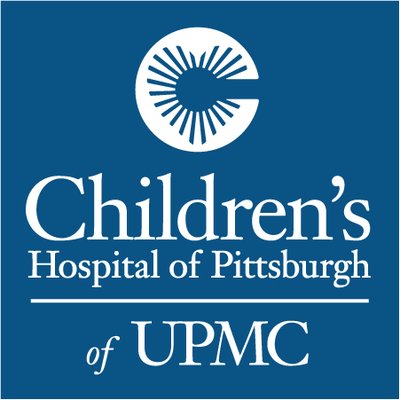Efficacy of Short-Course Antimicrobial Treatment for Children With Acute Otitis Media and Impact on Resistance
| Status: | Terminated |
|---|---|
| Conditions: | Other Indications, Infectious Disease |
| Therapuetic Areas: | Immunology / Infectious Diseases, Other |
| Healthy: | No |
| Age Range: | Any |
| Updated: | 10/8/2017 |
| Start Date: | January 2012 |
| End Date: | October 2015 |
A Phase 2b, Multicenter, Randomized, Double Blind, Placebo-Controlled Clinical Trial to Evaluate the Efficacy of Short-Course Antimicrobial Therapy for Young Children With Acute Otitis Media (AOM) and Impact on Antimicrobial Resistance
The investigators will study whether, in young children with acute otitis media (AOM),
shortening length of antibiotic treatment as a strategy for reducing antimicrobial resistance
provides satisfactory clinical outcome. This is a Phase 2b multicenter, randomized,
double-blind, placebo-controlled clinical trial in 600 children aged 6 through 23 months
comparing the efficacy of consistent reduced-duration antimicrobial treatment (5 days) with
that of consistent standard-duration treatment (10 days) for each episode of AOM developing
during a single respiratory season (October 1 through May 31).
shortening length of antibiotic treatment as a strategy for reducing antimicrobial resistance
provides satisfactory clinical outcome. This is a Phase 2b multicenter, randomized,
double-blind, placebo-controlled clinical trial in 600 children aged 6 through 23 months
comparing the efficacy of consistent reduced-duration antimicrobial treatment (5 days) with
that of consistent standard-duration treatment (10 days) for each episode of AOM developing
during a single respiratory season (October 1 through May 31).
Eligible subjects will be randomized at the enrollment visit and will have a telephone call
in the course of therapy, and a subsequent visit at the end of therapy. Thereafter, they will
be followed through the end of the respiratory season, and their parents will be encouraged
to bring their child when concerned about a potential recurrence of AOM. At each recurrence
subjects will receive the treatment regimen (either standard- or reduced-duration) to which
they were randomized at study entry (consistent treatment strategy).
The recruitment of eligible children with AOM of varying degrees of severity from various
primary care practices in 2 separate geographic regions, i.e. Western Pennsylvania and
Kentucky, representing urban, suburban and rural demographics will enhance generalizability
of study findings and encourage translation to clinical practice.
in the course of therapy, and a subsequent visit at the end of therapy. Thereafter, they will
be followed through the end of the respiratory season, and their parents will be encouraged
to bring their child when concerned about a potential recurrence of AOM. At each recurrence
subjects will receive the treatment regimen (either standard- or reduced-duration) to which
they were randomized at study entry (consistent treatment strategy).
The recruitment of eligible children with AOM of varying degrees of severity from various
primary care practices in 2 separate geographic regions, i.e. Western Pennsylvania and
Kentucky, representing urban, suburban and rural demographics will enhance generalizability
of study findings and encourage translation to clinical practice.
Inclusion Criteria:
1. Aged 6 through 23 months
2. Have evidence of AOM defined as:
- recent (within 48 hours) onset of signs and symptoms as described in the Acute
Otitis Media - Severity of Symptoms (AOM-SOS) Scale AND a score of ≥3 at the time
of enrollment on the AOM-SOS scale
- middle ear effusion evidenced by the presence of at least 2 of the following:
- decreased or absent mobility of the tympanic membrane
- yellow or white discoloration of the tympanic membrane
- opacification of the tympanic membrane
AND
- acute inflammation evidenced by one of the following:
- 1+ bulging of the tympanic membrane with either intense erythema or otalgia
- 2+ or 3+ bulging of the tympanic membrane
3. Has received at least 2 doses of pneumococcal conjugate vaccine
4. Parent has provided informed consent
Exclusion Criteria:
1. Toxic appearance [capillary refill >3 seconds, systolic blood pressure <60 mm Hg];
2. Inpatient hospitalization
3. Clinical or anatomical characteristics that might obscure response to treatment
(tympanostomy tubes in place, cleft palate, or Down syndrome)
4. Sensorineural hearing loss (unilateral or bilateral)
5. Serious underlying systemic problems that might obscure response to infection (cystic
fibrosis, neoplasm, juvenile diabetes)
6. Concomitant infection that would preclude evaluation of the response of the child's
AOM to study product (pneumonia, periorbital cellulitis)
7. Acute wheezing exacerbation which may require treatment with systemic corticosteroids
8. Known renal or hepatic dysfunction or insufficiency
9. History of amoxicillin-clavulanate-associated cholestatic jaundice
10. Immune dysfunction or receipt of immunosuppressive therapy; chronic gastrointestinal
conditions (i.e., malabsorption, inflammatory bowel disease)
11. Co-medications (systemic corticosteroids, more than one dose of systemic antimicrobial
therapy within 96 hours, receipt of any investigational drug or vaccine within 30
days)
12. Hypersensitivity to penicillin, amoxicillin or amoxicillin-clavulanate, or
phenylketonuria or known hypersensitivity to aspartame
13. Unable to complete study, or no access to phone
14. Previously enrolled in this study or currently enrolled in another study
We found this trial at
2
sites
Click here to add this to my saved trials
4401 Penn Avenue
Pittsburgh, Pennsylvania 15224
Pittsburgh, Pennsylvania 15224
412-692-5325

Children's Hospital of Pittsburgh of UPMC UPMC is one of the leading nonprofit health systems...
Click here to add this to my saved trials